The year in tiny pieces of fabric
A lot of baseball cards have been released in 2013. Between Topps (MLB and MLBPA licenses), Panini (MLBPA license), Leaf (no licenses), and Upper Deck (MLBPA license but strict MLB oversight), more than 40 baseball products have been released this year. So which cards stand out from the rest? To answer that question, we’ll break down the key Mets cards from 2013 in The Essentials.
Game-used memorabilia cards have been a popular mainstay in the hobby for over a decade, but the concept seems to have gotten stale in recent years. Gone are the days when anything a player wore, touched, or even saw at a game could be found embedded in a cardboard slab. Today, cards are mostly limited to swatches of fabric or wood with little to identify where they came from. Luckily, you have this site to use as a reference for all your fabric identification needs. Or at least you will whenever I finish scanning and cataloging all of this stuff. Which is to say, likely never. At the very least though, I can walk you through the new and notable material of 2013.
Mets Patches
Let’s start with the big stuff – patches. Patch cards are somewhat hard to find these days, particularly ones with great big interesting patch pieces like this card:
I’m a sucker for sleeve patches, especially when so much of one is contained on one card. Unfortunately, most of the Mets patches in circulation are tiny nondescript scraps from numbers or the team name. Panini probably did it best this year with the patches in 2012 National Treasures.
Not only do these have nice big chunks of patch, but they also feature on-card autographs. Since they’re dated 2012, they are also sort of rookie cards, though the jury’s still out on that one. While not all of the 135 copies of each (99 + 25 + 10 + 1) have patch swatches, a significant number do, putting these at some of the most prolific patches of 2013. And for Matt Harvey, some of the most valuable.
And then there’s Dickey. Building on the pinstripe swatches first seen in last year’s Triple Threads, R.A. Dickey had Mets patches released in several products in 2013. Above are pieces of the “NEW YORK” from the road gray jersey (left) and the “KID 8” sleeve patch worn in honor of Gary Carter (right). Dickey would also have a few pieces of Blue Jays patch (from a camouflage jersey) in 2013 Triple Threads.
Jeurys Familia and Zack Wheeler are the final Mets with their first Mets patches in 2013. I’m still working on getting the Wheeler though…
Piping
One step down from a patch is a strip of piping. For pants swatches (which are what the white Niuewenhuis swatches appear to be), this is about as exciting as things get. R.A. Dickey, Kirk Nieuwenhuis, and Matt Harvey all had a few piping cards for the first time in 2013. Nieuwenhuis’s are some of the largest strips I’ve seen in cards.
Multicolor Swatches
Matt Harvey’s jersey swatches in 2012 Panini National Treasures were from his 1989 throwback jersey, which means lots of multicolor swatches from the racing stripe on the sides and shoulders. One more reason why National Treasures was such a big hit, shame about the smudged signature…
Stripes
Zack Wheeler is the latest test subject for the Curse of the Pinstripes. Will he pitch in 2014? Only time will tell.
The Blues
With the 2012 batting practice jersey now retired and a new version, similar to the 2013 AL All-Star workout jersey, due in 2014, we’ve gotten a few more swatches from these jerseys in 2013. David Wright, Matt Harvey, Jeurys Familia, and maybe Zack Wheeler joined Jordany Valdespin with this type of fabric. Matt Harvey also had a few mesh variants in 2013 Topps Tier One.
Green
The big surprise in 2013 Topps Triple Threads was the first swatch of green fabric from a St. Patrick’s Day spring training jersey. From Kirk Nieuwenhuis. At least it’s from someone who’s still with the organization, I guess.
2013 World Baseball Classic
Interestingly, some of the most common patches in 2013 were from the 2013 World Baseball Classic. Seven Mets were featured in the 2013 Topps Tribute WBC patch set: David Wright, R.A. Dickey, Jose Reyes, Carlos Beltran, Angel Pagan, Marco Scutaro, and Jae Seo.
2013 All-Star Game
As usual, Topps Update featured swatches from the workout jerseys from the 2013 All-Star Game held at Citi Field. The Mets were represented by David Wright and Matt Harvey, with Carlos Beltran and Marco Scutaro also on the NL team (Bartolo Colon will be the Mets representative from the AL team when he gets his first start with the team in 2014). The jerseys prominently feature Mets colors with orange front panels, orange mesh back panels, and blue mesh side panels. Swatches from all three types of fabric were included in the All-Star Stitches inserts in Topps Update and Topps Chrome update.
2012 Futures Game
Last year, only the primary fabrics from the 2012 Futures Game jerseys worn by Wilmer Flores (World) and Zack Wheeler (USA) were featured in the various memorabilia cards commemorating the event. The secondary fabrics, gray/gray mesh for the World team and white/white mesh for the USA team, made their way into circulation in several products in 2013. Unfortunately, being so generic makes identifying the plain white and gray swatches a bit difficult, especially for Wheeler, who had fabric from several different jerseys released in 2013.
2013 Futures Game
The 2013 Futures Game featured two Mets pitchers (Noah Syndergaard for the USA team and Rafael Montero for the World team) as the starters, which was perfect for a game at the Mets’ home stadium. Outfielder Brandon Nimmo was elected by the fans as the final member of the USA team (before injury replacements were made). Only Nimmo and Montero were featured in the Futures Game jersey cards in 2013 Bowman Draft Picks & Prospects, and with only the primary fabric. The status of Syndergaard’s jersey is unknown.
Other MLB Fabric
On the more boring side of things, several Mets had their first jersey cards featuring plain swatches from white or gray MLB jerseys this year. R.A. Dickey, Matt Harvey, Kirk Nieuwenhuis, and Zack Wheeler all had a variety of white and gray fabric released in 2013.
Other Stuff
Several (well, two at least) players who were new to the Mets in 2013 and are now gone had memorabilia cards released in 2013 showing them as Mets. None of the material is from a Mets jersey; Marcum’s is probably from Brewers jerseys and Byrd’s is from a Cubs jersey.
Bats
Rounding out the year’s significant memorabilia cards are a bunch of bat cards. R.A. Dickey had his first bat cards in Topps Triple Threads, shown in a Blue Jays uniform. 2013 15th-round draft pick Colton Plaia had a Team USA bat card in Panini USA Baseball Champions. And that’s a nice Darryl Strawberry bat card, so let’s close out this year’s memorabilia on that.
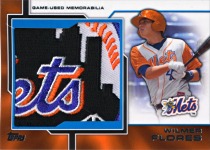
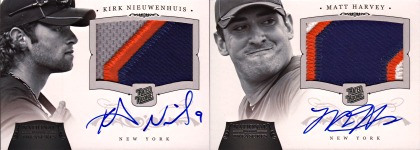
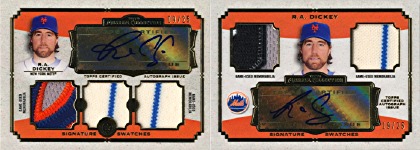
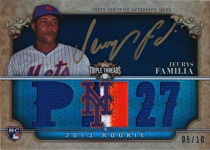
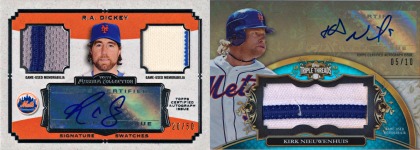
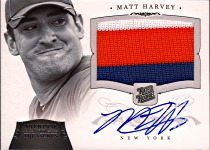

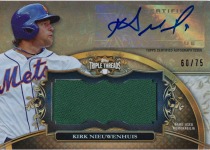



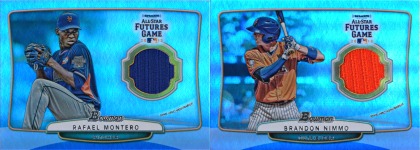
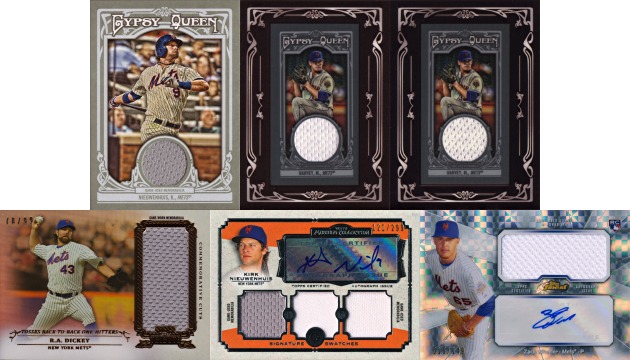
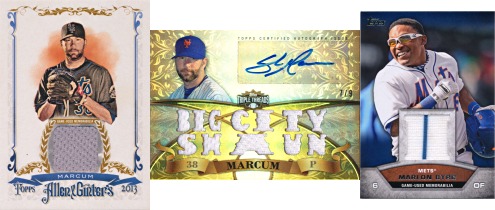
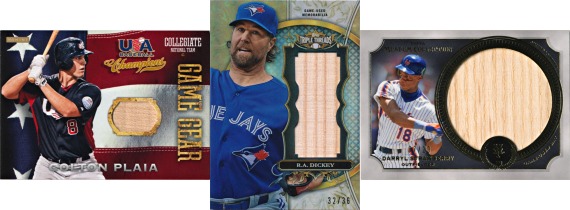
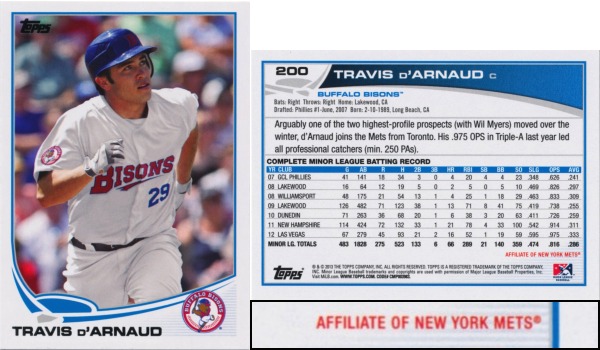
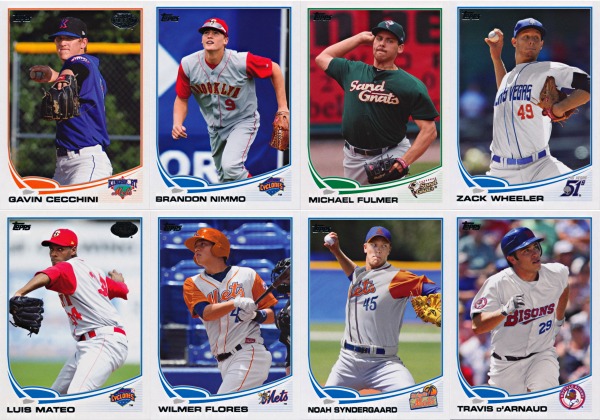
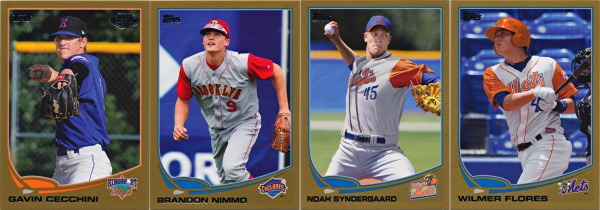
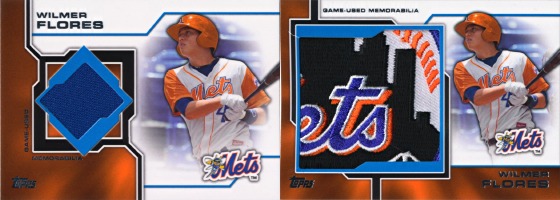

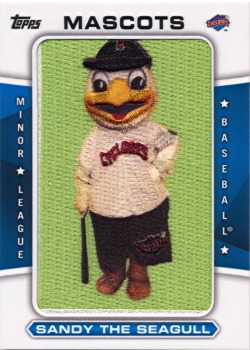
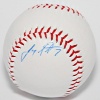
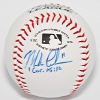
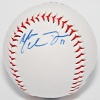
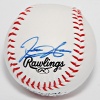
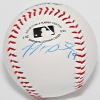
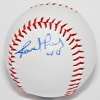
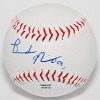
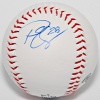
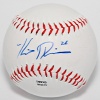
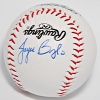
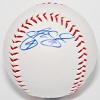
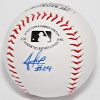
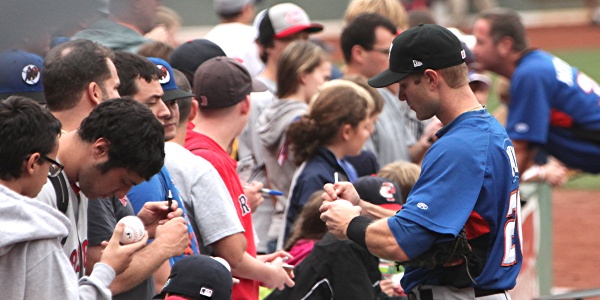
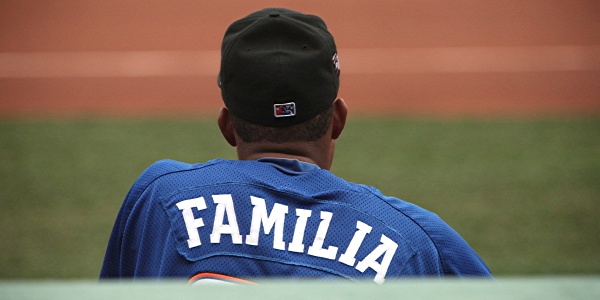
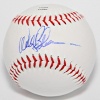
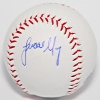
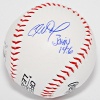
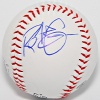
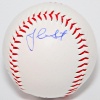
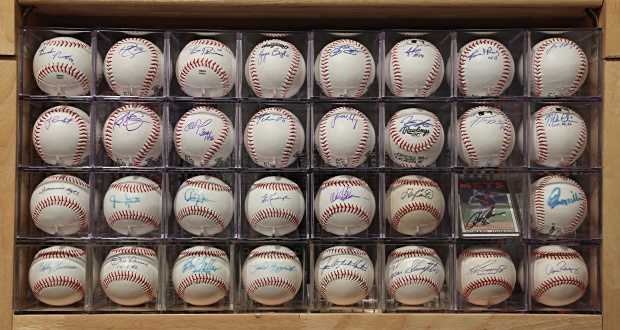
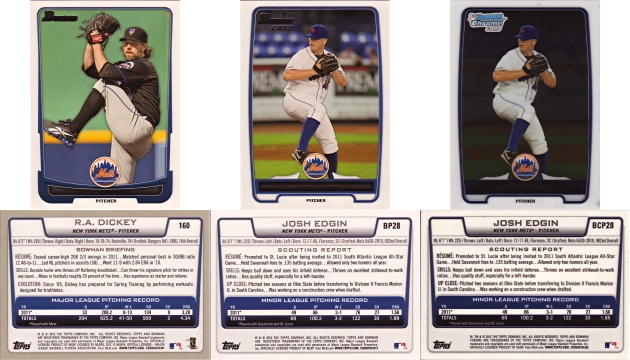
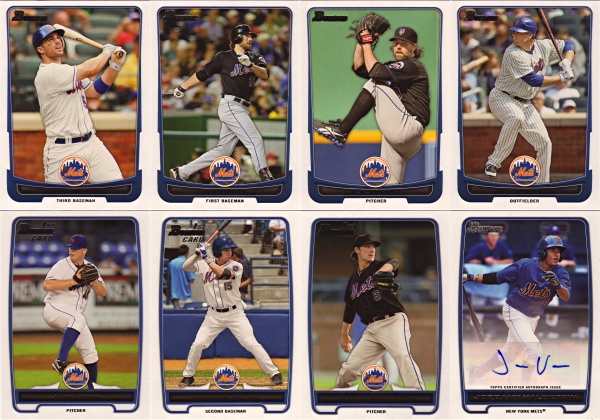
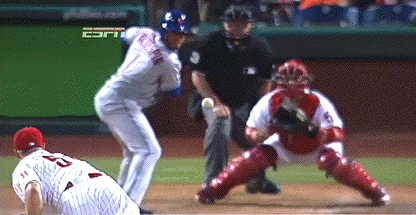
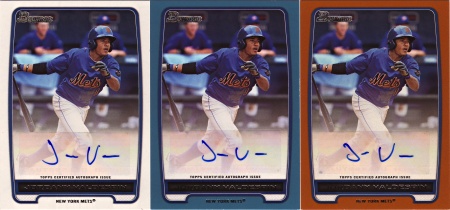
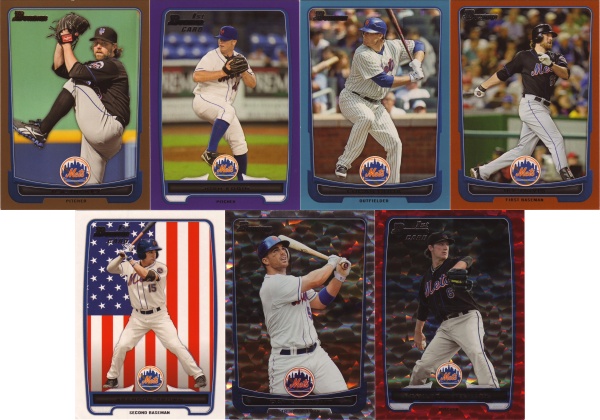
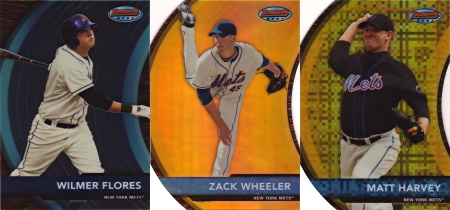 Luckily (or not), you won’t see most of these in a pack. A typical pack will contain one gold parallel card, two Bowman Chrome cards, two prospect cards, and five base cards. Autographs are one per hobby box (and three per jumbo box, not that you can find any). The blue and red wave refractors aren’t in any packs, those are a limited wrapper redemption that I just barely got my wrappers in for before the 10,000 packs were claimed less than a week after the product launched. Like the silver and red ice parallels, the blue and red wave refractors are new parallel styles and look great. It’s nice to see some parallels that aren’t simple color variants or bizarre checkerboard patterns.
Luckily (or not), you won’t see most of these in a pack. A typical pack will contain one gold parallel card, two Bowman Chrome cards, two prospect cards, and five base cards. Autographs are one per hobby box (and three per jumbo box, not that you can find any). The blue and red wave refractors aren’t in any packs, those are a limited wrapper redemption that I just barely got my wrappers in for before the 10,000 packs were claimed less than a week after the product launched. Like the silver and red ice parallels, the blue and red wave refractors are new parallel styles and look great. It’s nice to see some parallels that aren’t simple color variants or bizarre checkerboard patterns.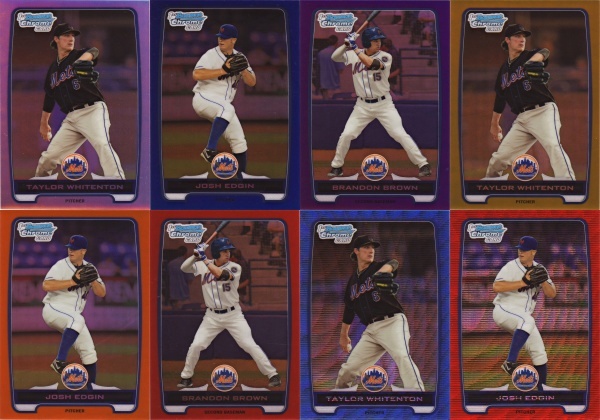
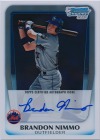
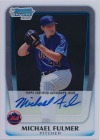
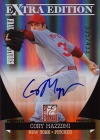
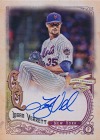
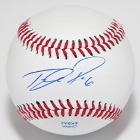
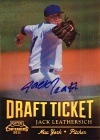
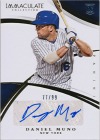
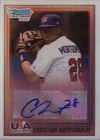
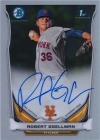
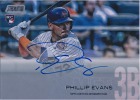
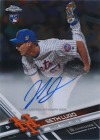
Recent Comments